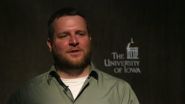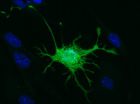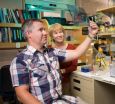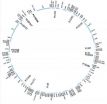(Press-News.org) A variety of cancers are treated with the anti-tumor agent bleomycin, though its disease-fighting properties remain poorly understood.
In a new study, lead author Basab Roy—a researcher at Arizona State University's Biodesign Institute—describes bleomycin's ability to cut through double-stranded DNA in cancerous cells, like a pair of scissors. Such DNA cleavage often leads to cell death in particular types of cancer cells.
The paper is co-authored by professor Sidney Hecht, director of Biodesign's Center for BioEnergetics. The study presents, for the first time, alternative biochemical mechanisms for DNA cleavage by bleomycin. The new research will help inform efforts to fine-tune the drug, improving its cancer-killing properties, while limiting toxicity to healthy cells.
Results of the study recently appeared in the Journal of the American Chemical Society.
Bleomycin is part of a family of structurally related antibiotics produced by the bacterium, Streptomyces verticillus. Three potent versions of the drug, labeled A2 , A5 and B2 are the primary forms in clinical use against cancer.
Bleomycin's cancer-fighting capacity was first observed in 1966 by Japanese researcher Hamao Umezawa. The drug gained FDA approval in 1973 and has been in use since then, particularly for the treatment of Hodgkin's lymphoma, squamous cell carcinomas, and testicular cancer.
One of the attractive properties of bleomycin is the fact that it can be administered in fairly low doses, relative to many other cancer therapies. Previous research has shown that bleomycin can cause death in aberrant cells by migrating to the cell nucleus, binding with DNA and subsequently causing breaks in the DNA sequence. Following a binding event, a molecule of bleomycin can effectively slice through one or both strands of DNA.
Cleavage of DNA is believed to be the primary mechanism by which bleomycin kills cancer cells, particularly through double-strand cleavages, which are more challenging for the cellular machinery to repair. "There are several mechanisms for repairing both single-strand and double-strand breaks in DNA, but double-strand breaks are a more potent form of DNA lesion," Roy says.
The Center for BioEnergetics has been studying several forms of bleomycin, developing a sizeable library of variants, with the goal of engineering the best bleomycin analog. Roy is particularly interested in the subtle biochemistry of bleomycin, including the specificity of its binding regions along the DNA strand and the drug's detailed mechanisms of DNA cleavage.
For the new study, bleomycin A5 was used. Bleomycin A5 has similar DNA binding and cleaving properties as bleomycin A2 and B2. Previous research has revealed that bleomycin binds with highly specific regions of the DNA strand, typically G-C sites, where a guanosine base pairs with a cytidine. Further, the strength of this binding is closely associated with the degree of double-strand DNA cleavage.
From a pool of random DNA sequences, a library of 10 hairpin DNAs was selected, based on their strong binding affinity for bleomycin A5. Hairpin DNAs are looped structures, which form when a segment of a DNA strand base-pairs with another portion of the same strand. These hairpin DNAs were used to investigate double-strand cleavage by bleomycin.
Each of the 10 DNA samples underwent double-strand cleavage at more than one site. Further, all of the observed cleavage sites were found within or in close proximity to an 8 base pair variable region, which had been randomized to create the original library. Examination of the 10 DNA samples exposed to bleomycin revealed a total of 31 double-strand cleavage sites. Earlier research had described the form of double-strand DNA cleavage by bleomycin which occurred at 14 of these sites; however the remaining 17 cases of double-stranded cleavage occurred through a different mechanism, described for the first time in the present study.
As in earlier studies, iron (FeII) was used as a cofactor for bleomycin in the binding events. Two types of bleomycin binding and cleavage activity are detailed in the paper. In the first, bleomycin and its iron cofactor (Fe.BLM) bind with hairpin DNA at a primary site. Typically, this is a site with a particular sequence: 5´-G-Py-B-3´. (Here, 5´ refers to one end of the DNA hairpin, G refers to the base guanosine, Py refers to a pyrimidinic base—either cytidine or thymidine, B refers to any nucleobase and 3´ refers to the other DNA end.
The result of this binding is the abstraction of a hydrogen atom at the primary site. Two results are possible following the primary binding event, one causing a single-strand break in the primary site, the other, failing to produce full cleavage of the strand, producing instead a site lacking either a purine or pyrimidine base. This is known as an AP site.
In the first case—where bleomycin achieves single strand cleavage—the bleomycin molecule can then become reactivated, once more abstracting a hydrogen atom from the opposing DNA strand. The opposite stand can again follow one of two pathways, a) full cleavage of the opposing strand, yielding a double strand cleavage or b) formation of an AP site. The authors note that this AP site can lead to strand cleavage through the opposing DNA strand with the addition of a mild base like n-butylamine.
The two-stage process of double strand cleavage by bleomycin and its iron cofactor is outlined in figure 1.
Results of the study emphasized the correlation between the strength of bleomycin binding to DNA and the frequency of double strand cleavage. Of the 10 sample hairpin DNAs, the two most tightly bound to bleomycin each showed 5 double strand cleavages whereas the least tightly bound samples exhibited just two double strand cleavages.
This important study proposes, for the first time, a plausible mechanism for DNA cleavage by bleomycin that may lead to tumor cell killing as well as identifying the most common sequences involved in DNA site binding and subsequent strand breakage.
Roy stresses that a great deal of work remains, to elucidate the biochemical causes of tight binding by bleomycin. Further, bleomycin's specificity for cancer cells remains enigmatic. New work in the Hecht lab however has identified the carbohydrate moiety of the molecule as being responsible for tumor cell targeting.
"Cancer is still a black hole," says Roy. "We're trying to make this particular molecule (bleomycin) better. There is still so much to learn."
INFORMATION:
In addition to his appointment at Biodesign, Basab Roy is a graduate student in the Department of Chemistry and Biochemistry at ASU's College of Liberal Arts and Sciences.
Written by: Richard Harth
Science Writer: Biodesign Institute
richard.harth@asu.edu
Cutting cancer to pieces: New research on bleomycin
2014-04-30
ELSE PRESS RELEASES FROM THIS DATE:
Infertile women want more support
2014-04-30
VIDEO:
University of Iowa Communication Studies researchers Keli Steuber and Andrew High talk about infertility.
Click here for more information.
Many women coping with infertility count on relatives or close friends for encouragement and assistance. But according to research at the University of Iowa, when it comes to support, women may not be receiving enough—or even the right kind.
"Infertility is a more prevalent issue than people realize. It affects one in six couples, ...
Stem cells from teeth can make brain-like cells
2014-04-30
University of Adelaide researchers have discovered that stem cells taken from teeth can grow to resemble brain cells, suggesting they could one day be used in the brain as a therapy for stroke.
In the University's Centre for Stem Cell Research, laboratory studies have shown that stem cells from teeth can develop and form complex networks of brain-like cells. Although these cells haven't developed into fully fledged neurons, researchers believe it's just a matter of time and the right conditions for it to happen.
"Stem cells from teeth have great potential to grow into ...
Salk Institute study identifies novel regulator of key gene expression in cancer
2014-04-30
LA JOLLA—Scientists at the Salk Institute for Biological Studies have identified a key genetic switch linked to the development, progression and outcome of cancer, a finding that may lead to new targets for cancer therapies.
The switch, a string of nucleotides dubbed a long non-coding RNA (lncRNA), does not code for proteins like regular RNA. Instead, the scientists found, this particular lncRNA acts as an on/off switch for a key gene whose excessive activity is tied to inflammation and cancer, COX-2.
The COX-2 gene mediates inflammation, which in most cases helps our ...
New revolutionary sensor links pressure to color change
2014-04-30
RIVERSIDE, Calif. — Imagine an automobile crash test that uses test dummies painted all over with a substance that can change color according to the levels of stress that various parts of the dummies' bodies will endure. Such a "color map" could provide vital information to engineers designing safer automobiles.
Or imagine baseball gloves that when worn show the batters if they are using the appropriate amount of pressure to grip their bats, resulting in better performance.
New technology developed at the University of California, Riverside may now make the above and ...
EARTH Magazine: Precise to a fault: How GPS revolutionized seismic research
2014-04-30
Alexandria, Va., - Global Positioning System (GPS) technology was conceived in the 1960s to provide precise time and location data to the U.S. military, but it was soon embraced by geodesists and earth scientists. The first major test of GPS as a seismic tool occurred on Oct. 17, 1989, when the Loma Prieta earthquake struck San Francisco just as the third game of the World Series was about to begin at Candlestick Park. The quake killed 63 people, injured several thousand and caused an estimated $6 billion in damage.
Prior to the quake, geoscientists had placed GPS markers ...
Simple sequence repeats for population-level studies of pines
2014-04-30
Simple sequence repeats, abbreviated SSRs and frequently referred to as microsatellites, are highly variable sections of the genome. 'Sequence repeat' refers to the fact that a nucleotide motif is repeated. 'Simple,' because the repeated sequence often consists of only a couple of nucleotides—for example, ATAT.
Because these markers typically have high rates of molecular evolution, the number of repeats present in the genome often differs between individuals. By isolating SSRs and comparing length differences between taxa, evolutionary relationships can be inferred. Their ...
Regenerative medicine approach improves muscle strength, function in leg injuries
2014-04-30
PITTSBURGH, April 30, 2014 – Damaged leg muscles grew stronger and showed signs of regeneration in three out of five men whose old injuries were surgically implanted with extracellular matrix (ECM) derived from pig bladder, according to a new study conducted by researchers at the University of Pittsburgh School of Medicine and the McGowan Institute for Regenerative Medicine. Early findings from a human trial of the process and from animal studies were published today in Science Translational Medicine.
When a large volume of muscle is lost, typically due to trauma, the ...
Frozen meal eaters get more vegetables including greens, beans and whole grains but with lower total calories vs. fast food restaurant eaters
2014-04-30
SAN DIEGO (April 30, 2014) – New analysis of data from the 2003-2010 What We Eat In America (WWEIA) National Health and Nutrition Examination Survey (NHANES), a program of the Centers for Disease Control and Prevention (CDC), indicates that consumers of frozen meals (1) compared to consumers of quick service restaurant (QSR) meals (2) had lower calorie intakes and better Healthy Eating Index (HEI) score. In fact, the analysis revealed that those who consumed frozen meals consumed 253 fewer calories than those who consumed a quick service restaurant meal.
These results ...
Competition for ecological niches limits the formation of new species
2014-04-30
The rate at which new species evolve is limited by competition for ecological niches, report scientists from the University of Chicago in Nature on April 30. The study, which analyzes the evolutionary and genetic relationships between all 461 songbird species that live in the Himalayan mountains, suggests that as ecological niches within an environment are filled, the formation of new species slows or even stops.
To study what controls the process of speciation, Trevor Price, PhD, professor of ecology and evolution at the University of Chicago, Dhananjai Mohan of the ...
Initial research: Mango's effects on ulcerative colitis & bone parameters in animal models
2014-04-30
SAN DIEGO, CA – April 30, 2014 – Three new mango-related studies were presented this week at the 2014 Federation of American Societies for Experimental Biology (FASEB) in San Diego, revealing initial findings on the effects of mango consumption on ulcerative colitis and bone parameters in animal models.
"The mango industry's nutrition research program is committed to advancing our understanding of the role mangos can play as part of a healthy diet," said Megan McKenna, Director of Marketing for the National Mango Board. "These studies provide important insights that ...







